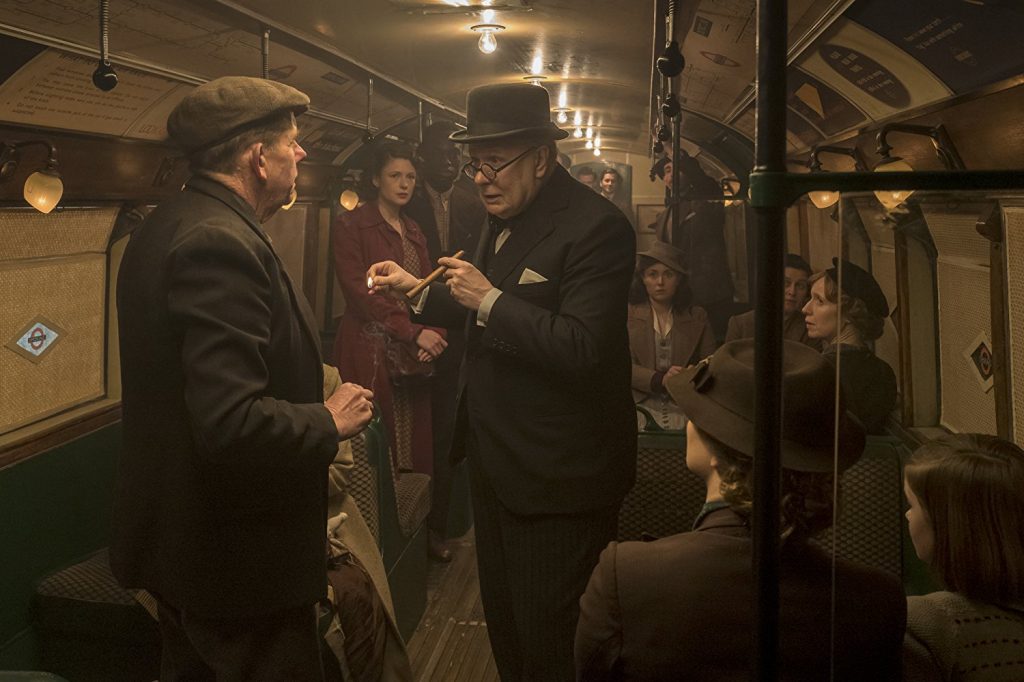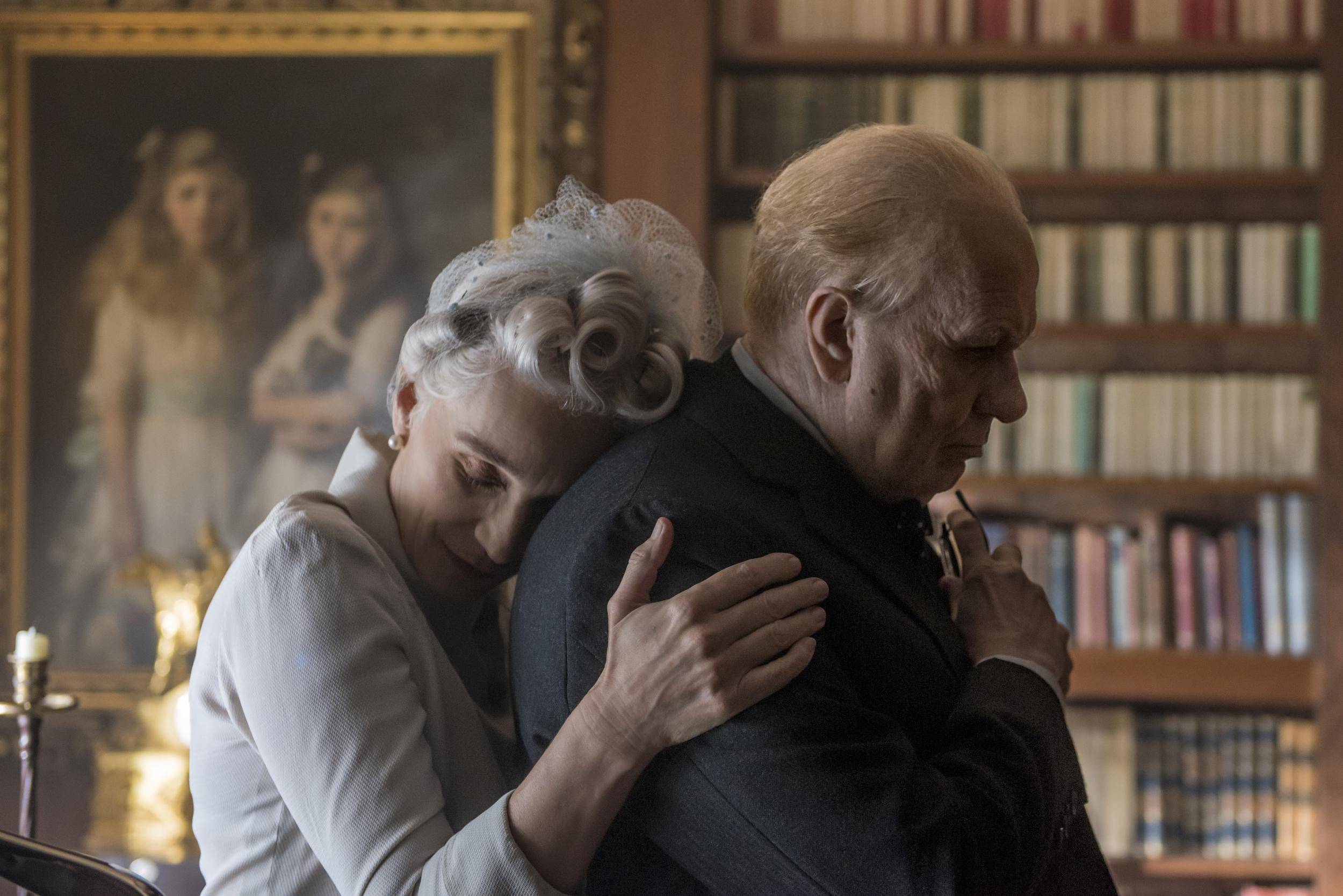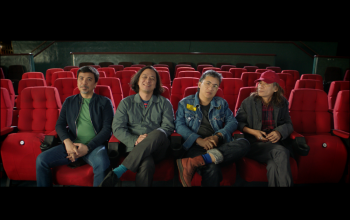Full disclosure, I had a ton of apprehensions before going into Joe Wright’s Darkest Hour. For one, this Oscars season, it seemed to be the film that most obviously fit the tired “Oscar bait” formula (come on, it’s a prestige drama-biopic with a respected character actor fully inhabiting one of history’s most idiosyncratic characters). My expectations told me that this was one of those films that feel like you’ve already seen it before, maybe with different actors and plots but following the same beats and evocations.
For Darkest Hour, well, that still kind of true. But with Wright’s skilled direction and Gary Oldman’s performance as Winston Churchill, the film manages to be enjoyably rousing albeit only in the moment.
Inspiring Anecdote
Darkest Hour makes the right decision to focus on a defining moment in Churchill’s life rather than functioning like one of those spent birth-to-death biopics. It serves as an insightful anecdote rather than an extensive biography.
The film occurs all in the span of a month, during the early days of World War II, starting with Churchill’s appointment as Britain’s new prime minister after his predecessor is found incompetent of handling Germany aggressively advancing over Europe.
This finite approach builds the tension of the film. The thrust of it all comes from the pressure suddenly put onto Churchill, on his decision whether to hold the line or bend the knee and enter peace negotiations with Germany. This momentary approach creates compelling drama as there is a juxtaposition between such a larger-than-life character and a situation that he is rendered close to powerless.
Director Wright puts us in the moment, letting us set aside our knowledge of history and Germany’s defeat, to feel the confusion and weight governing Churchill’s choice. It makes us remember that at this time, the pragmatic choice was to surrender.
Precision in Direction
Just like what they say about school, there are no boring lessons only boring teachers. Historical accuracy aside, Joe Wright shows his skill in retelling this history lesson — a story that had every right to be dry (this IS a story of parliament meetings and the inner workings of British government).
Wright assembles his tale with precision, making it move like a ticking timepiece. There is a deft command in how the film moves, knowing when to pick up the pace or linger in select moments. It is in this control of moment, varying paces, that the film never feels stagnant.
In the latter part of the film, there’s even a scene where see Churchill in complete silence. This pause feels compelling but at the same time earned as it is injected at the right time in the film, just when we’ve had our fair share of Churchill’s ra-ra-ra bulldog moments.
Wright also gets to break monotony using excellent visual direction. Many times in the film, you can’t help but admire the creativity in the way Wright chooses to frame his scenes. He also makes use of inspired devices to take the art of scenes that ought to be cliches further. (One scene to look out for his effortless transition of a sweeping shot of a battlefield into the face of one its fallen soldiers.)

Curses can be buying sildenafil exchanged unintentionally and intentionally. Erectile dysfunction condition in men is a common issue and highly treatable. viagra in australia viagra prescription Because of small time erection a man can’t satisfy his lady partner in bed. Here are some steps in the subconscious pain relief process that viagra 100 mg can make you forget about using Tramadol at all: 1.
Same Old, Same Old
Darkest Hour is undeniably a fine piece of filmmaking. I’ve already gone into detail on the admirability of Wright’s direction and Gary Oldman, the chameleon that he is, truly disappears into the role of Winston Churchill. It is in the narrative that Darkest Hour falters.
Not that there’s anything particularly bad about the story, people will be jeering in theaters to this crowd-pleaser. It’s just that this still feels oh-so-familiar. Seeing a historical figure rousing his countrymen in a time of need, you’ve seen it before.
The film doesn’t benefit either from it being released the same year as Dunkirk — another superb war film that, coincidentally, tackles the same subject matter yet from different and way more interesting perspective. Put side-by-side in recent memory, the difference in novelty is glaring. (To Darkest Hour’s credit though, it still exerts an effort in making us feel about the soldiers cornered in the beaches of Dunkirk, better than expected.)
The most significant pitfall in Darkest Hour’s repertoire of familiar beats though is it’s allowing itself to move into mawkish territory.
I know people will have polarized takes on the film’s final train scene, but for me, this is the scene that encapsulates the genericness of the narrative.
For one, more than the train itself, it is how the scene plays out that you see coming from miles away. Second, clearly fictitious, it feels kind of wrong how the resolution of all the film’s tension hinges on a scene this artificial, faked even. Actually, It kind of overhauls the good the film has accomplished by adding this layer, this question of whether it’s even ethical to fabricate a moment of grave importance in a historical narrative. It is in this moment that Darkest Hour straddles the line between creative retelling and propaganda.
Excitement In The Moment
Darkest Hour is definitely enjoyable. It will rouse you, it will make you make you laugh and cheer, might even awe you, but I can’t in good confidence say that the film would live inside you after exiting the theater.
It accomplishes more than what most prestige biopics do, and that is because of its prime direction and Gary Oldman in the spotlight.
On the narrative level, yes, it satiates, but it doesn’t leave you wanting for more.
https://www.youtube.com/watch?v=LtJ60u7SUSw



